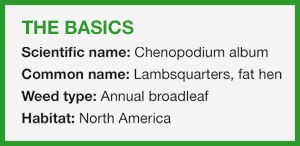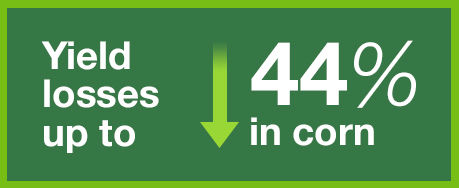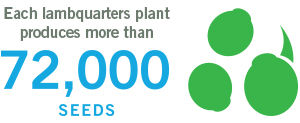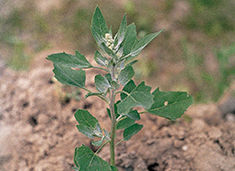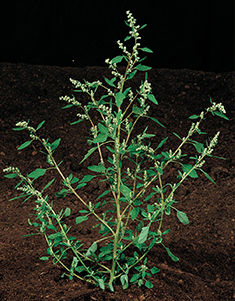Managing Lambsquarters, an Aggressive Weed Competitor
October 7, 2019

Lurking in Dormancy:
Dormancy contributes to lambsquarters proliferation. Some viable lambsquarters seed has been found to be decades old. It can take 12 years to deplete lambsquarters seeds in the seedbank by 50 percent and up to 78 years to deplete in the seedbank by 99 percent.2
Lurking in Dormancy:
Lambsquarters thrives in all soil types but does best in well-drained soils and open areas.
Identifying Lambsquarters
The good news is that lambsquarters is one of the easier weeds to identify. Some of the distinguishing features of lambsquarters include:
- A white mealy coating on young leaves, which sheds as the plant matures.
- First leaves that are opposite and linear-shaped with rounded tips.
- True leaves that are triangular and have slightly toothed edges. The underside of the leaf may be purplish.
- An upright, branched and bushy appearance when fully grown, with tight clusters of flowers at the end of the branches.
Known Resistance in Lambsquarters
Populations of weeds can become resistant to herbicides after repeated years of application, including lambsquarters. In the United States, common lambsquarters has shown documented resistance to ALS inhibitors (2) and photosystem II inhibitors (5). Best management practices can help keep resistant lambsquarters from going to seed and entering the soil seedbank.
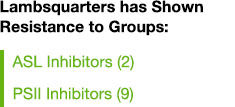
How Do I Manage Lambsquarters?
Lambsquarters is very difficult to manage because of its competitive nature, huge seed production, persistence and its early and sustained field emergence. Two tools for management of lambsquarters include herbicide treatments and tillage.
Herbicide strategies for corn
- Start with a clean field by using a pre-emergent herbicide, such as Corvus® (2, 27) or Balance® Flexx (27).
- Never plant into a field that has an established population of lambsquarters.
- Apply the full rate (according to label directions) of a pre-emergence herbicide that offers season-long control just before or just after planting.
- Plan to scout your fields regularly to monitor herbicide effectiveness.
- If weeds re-emerge, a timely post-emergence herbicide application is needed. Consider DiFlexx® DUO, which offers fast, effective weed control in corn, with two sites of action for built-in resistance management.
- Target weeds with an herbicide application before they are 3 inches tall. Post applications are especially dependent on size and age of the plants as well as environmental conditions.
Tillage strategies
- In order to reduce new seed production in an infested field, tillage can be considered for control; once lambsquarters is uprooted, it is not able to recover. However, tillage can bring seeds from the seedbank up to the surface where they may germinate.
- Tillage should be timed with peak emergence and, if possible, repeated until crop canopy is established. This practice can limit the number of weeds, stunt growth and reduce the overall seed population.
Additional Bayer Solutions for Lambsquarters
Bayer has solutions to combat tough-to-control and resistant weeds. Remember: Not every product is suitable for every situation, and use of the correct application technique will ensure the best results.
A well-thought-out herbicide program, using multiple sites of action, should be implemented to sustainably manage weeds. Before applying any herbicide, please read the entire label for the best possible results and to confirm that the product is effective on the weeds you wish to control.
For more information about managing lambsquarters in corn and soybeans, contact your local Bayer representative.
© 2018 Bayer CropScience LP, 800 North Lindbergh Blvd., St. Louis, MO 63167. Always read and follow label instructions. Bayer, the Bayer Cross, Coruvs, Balance and DiFlexx are registered trademarks of Bayer. Balance Flexx and Corvus are Restricted Use Pesticides. Not all products are registered for use in all states. For additional product information, call toll-free 1-866-99-BAYER (1-866-992-2937) or visit our website at www.CropScience.Bayer.us.
Work Cited
1. Loux, Mark, Stachler, Jeff, Johnson, Bill, and Nice, Glenn. "Control of Lambsquarters in Corn and Soybeans." April 2014. http://u.osu.edu/osuweeds/files/2014/04/lambsquarter07-1jdcqvi.pdf
2. “Common Lambsquarters.” Take Action Pesticide Resistance Management. 2018.
